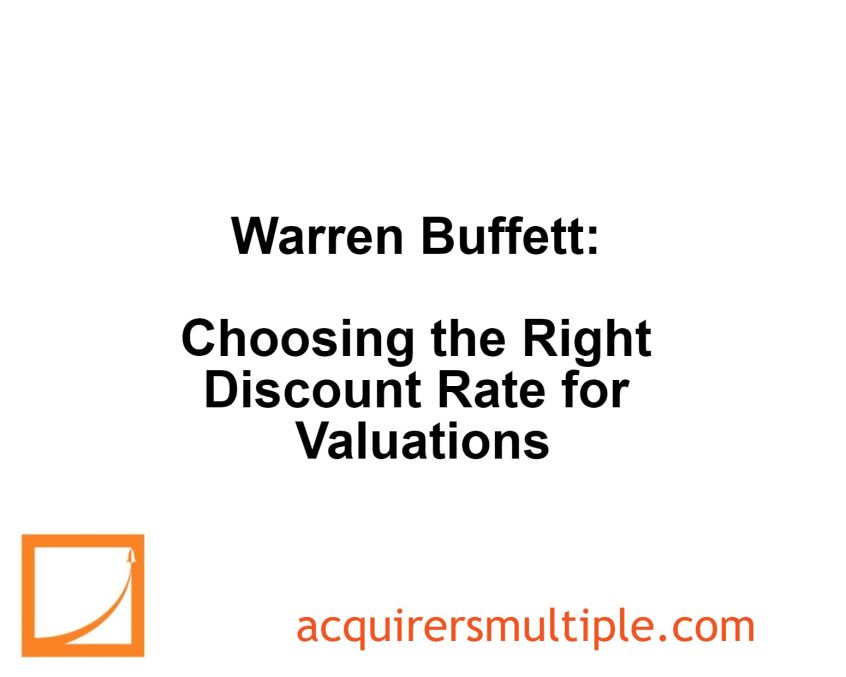During the 1996 Berkshire Hathaway Annual Meeting, Warren Buffett explained that when determining a discount rate for valuing future cash flows, he prefers using the long-term government bond rate.
He avoids adding extra risk premiums for different businesses, arguing that it’s more important to focus on businesses with predictable futures. Buffett believes that adding arbitrary risk adjustments, especially for speculative industries, is nonsensical and can lead to misleading valuations.
Instead, he emphasizes the importance of understanding the business well and buying it at a significant discount to its intrinsic value, rather than manipulating discount rates to account for perceived risks.
Here’s an excerpt from the meeting:
Buffett: Yeah. We get asked that question a lot. And we’ve answered it to some extent in past annual reports about what discount rate to use. We basically think in terms of the long-term government rate. And there may be times, when in a very—because we don’t think we’re any good at predicting interest rates, but probably in times of very—what would seem like very low rates—we might use a little higher rate.
But we don’t put the risk factor in, per se, because essentially, the purity of the idea is that you’re discounting future cash. And it doesn’t make any difference whether cash comes from a risky business or a safe business—so-called safe business.
So, the value of the cash delivered by a water company, which is going to be around for a hundred years, is not different than the value of the cash derived from some high-tech company, if any, that—(laughter)—you might be looking at. It may be harder for you to make the estimate. And you may, therefore, want a bigger discount when you get all through with the calculation.
But up to the point where you decide what you’re willing to pay—you may decide you can’t estimate it at all. I mean, that’s what happens with us with most companies. But we believe in using a government bond-type interest rate.
We believe in trying to stick with businesses where we think we can see the future reasonably well—you never see it perfectly, obviously—but where we think we have a reasonable handle on it. And we would differentiate to some extent. We don’t want to go below a certain threshold of understanding.
So, we want to stick with businesses we think we understand quite well, and not try to have the whole panoply with all different kinds of risk rates, because, frankly, we think that’d just be playing games with numbers. I mean, we—I don’t think you can stick something—numbers on a highly speculative business, where the whole industry’s going to change in five years, and have it mean anything when you get through.
If you say I’m going to stick an extra 6 percent in on the interest rate to allow for the fact—I tend to think that’s kind of nonsense.
I mean, it may look mathematical. But it’s mathematical gibberish in my view. You better just stick with businesses that you can understand, use the government bond rate. And when you can buy them—something you understand well—at a significant discount, then, you should start getting excited.
You can watch the entire meeting here:
For all the latest news and podcasts, join our free newsletter here.
Don’t forget to check out our FREE Large Cap 1000 – Stock Screener, here at The Acquirer’s Multiple:



